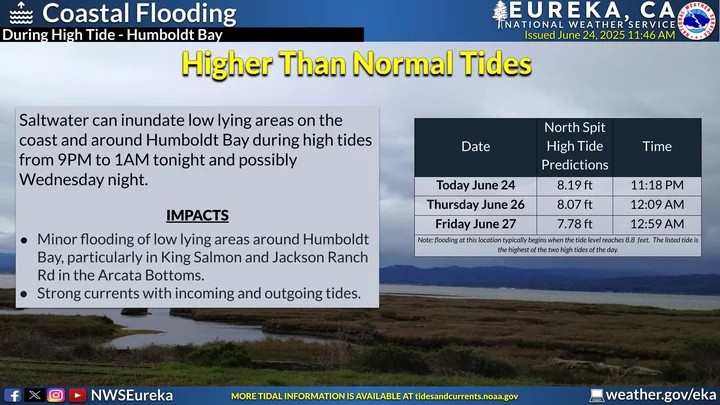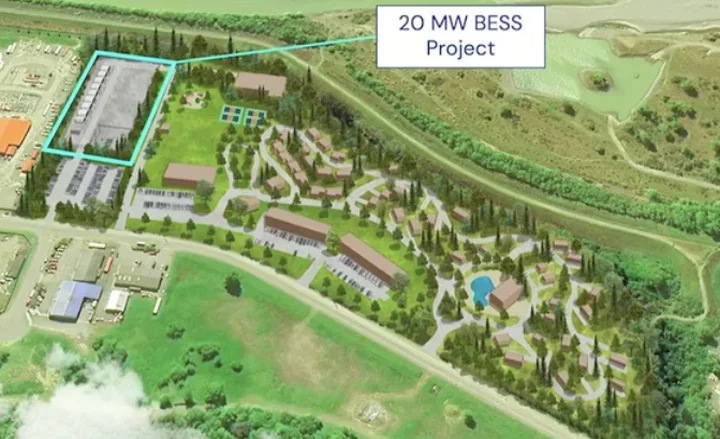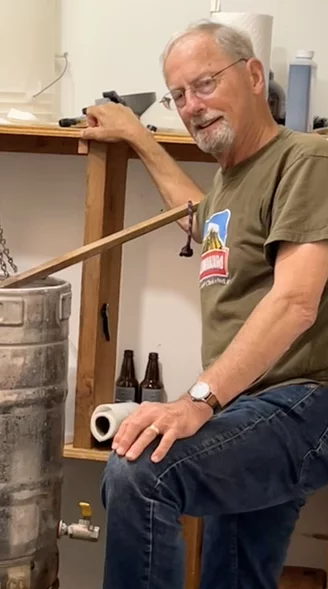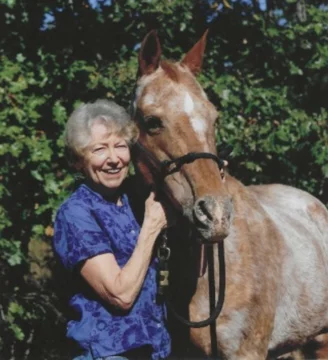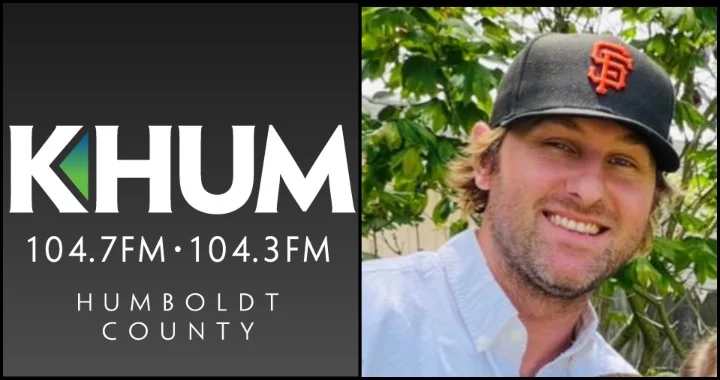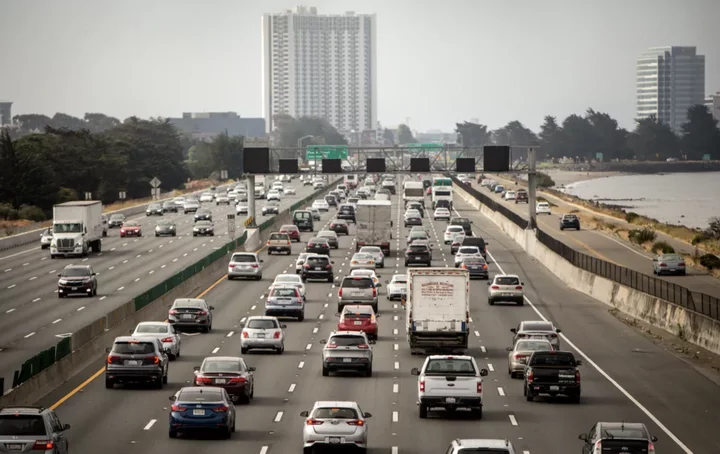There Will Be an Abnormally High Tide in Humboldt Bay Tonight; Flooding Not Out of the Question
Andrew Goff / Tuesday, June 24 @ 3:12 p.m. / How ‘Bout That Weather
There’s much water imminent, we’re told.
The Eureka arm of the National Weather Service notes that a gnarly high tide tonight could result in minor flooding around Humboldt Bay, possibly both tonight and Wednesday night. As such, they’ve issued a coastal flood advisory for between 9 p.m. and 1 a.m. tonight. The current might be stronger, too.
Now you know.
BOOKED
Yesterday: 5 felonies, 8 misdemeanors, 0 infractions
JUDGED
Humboldt County Superior Court Calendar: Today
CHP REPORTS
7480 Mm101 N Hum 74.80 (HM office): Assist with Construction
ELSEWHERE
Governor’s Office: TOMORROW: Make America Rake Again: Governor Newsom to make announcement on new wildfire prevention strategy targeting federal lands
Governor’s Office: Governor Newsom signs into law groundbreaking reforms to build more housing, boost affordability
Blue Lake City Council Nixes Agreement With Energy Developer for Controversial Battery Storage Facility
Ryan Burns / Tuesday, June 24 @ 3:01 p.m. / Local Government
An aerial view of the proposed battery energy storage system. | Image: PowerTransitions.
###
At a special meeting last night, the Blue Lake City Council voted 4-0 in closed session to terminate the city’s exclusive negotiating agreement with PowerTransition LLC, a Texas-based energy developer that was in line to transform the city’s defunct power plant into a 20-megawatt lithium-iron-phosphate battery energy storage facility.
The council had approved the agreement with PowerTransitions last year after a company representative approached the city with a plan to demolish some power plant infrastructure and build a battery energy storage system (BESS) that would repurpose the existing transformer and substation. PowerTransitions proposed to pay for site clean-up and remediation, with an estimated price tag between $750,000 and $1.5 million.
For the past four years, city staff have worked closely with the Redwood Coast Energy Authority (RCEA) to develop a small-scale BESS that would collect and store excess energy from the grid in rechargeable batteries for future use. At a meeting in February, PowerTransitions Senior Advisor Jeff Goldstein said the project would provide a five-day energy supply during a long-term power outage.
But the proposal drew criticism from some Blue Lake residents who argued that the project posed significant risks, including fire, environmental damage, such as potential contamination of Mad River. They also worried that it would create noise and light pollution.
PowerTransitions’s proposal came in response to a request for offers (RFO) issued in December by RCEA, our region’s community choice aggregation energy provider. That agency was seeking offers for new or incremental capacity projects that include solar energy generation plus battery storage.
Last night, when Blue Lake Mayor John Sawatzky announced the council’s vote to terminate its agreement with PowerTransitions, he said the decision was made due to the fact that the company had not been shortlisted as a finalist in RCEA’s procurement process.
Reached via phone today, Blue Lake City Councilmember Elise Scafani, who represents the city on RCEA’s Board of Directors, said that the city’s agreement with PowerTransitions was contingent on its inclusion on RCEA’s shortlist, because without a purchasing agreement from that agency, PowerTransitions wouldn’t have a customer willing to buy the energy stored at the facility.
Scafani added that the termination of this agreement doesn’t preclude a different project from being developed at the former biomass power plant site. Scafani noted that the city has a memorandum of understanding (MOU) with RCEA, established in early 2023, to explore possibilities at that property.
“This MOU said, ‘We understand that the biomass plant is kaput,’ but we have this grid interconnection — nobody can put a dollar figure on that,” Scafani said, highlighting the value of the plant’s transmission lines linking to the statewide energy grid. “To get those [built] now costs millions,” she said.
RCEA Executive Director Beth Burks said the power plant location remains a valuable asset, and the MOU to explore possible uses for it remains valid.
“We’re willing to work with the city to explore what could go out there and be a partner with that, to help the city evaluate what to do,” Burks said. She added that the proposals shortlisted in the RFO process will be revealed at the next RCEA board meeting, this Thursday.
Asked what comes next from the city council, Scafani said, “Next is we start at the beginning where maybe we should have started in the first place — that’s my opinion. The beginning needed to be town hall meetings so there was a full understanding of our potential and determining a direction with our citizens [for] where we want to go with this power plant. Very honestly, we don’t understand what we have and what our potential could be, and that should be a decision our community makes together.”
The Outpost reached out to PowerTransitions seeking a comment on last night’s decision but did not hear back before publication time.
RCEA will be hosting an informational community meeting and workshop on battery storage on July 23, 5:30 p.m. at the D Street Community Center in Arcata. Burks said it will offer a broad overview of the technology, addressing why it’s important, what communities should be concerned about and debunking some misinformation.
###
PREVIOUSLY
OBITUARY: David Thomas (Tom) Ford, 1948-2025
LoCO Staff / Tuesday, June 24 @ 6:59 a.m. / Obits
David Thomas (Tom) Ford, a beloved husband, father, grand-father, and great-grand father, paramedic, firefighter, veteran, actor and larger-than-life figure in Ferndale, California, passed away at home on June 16th, 2025, at the age of 77.
Tom, a Ferndale resident of 58 years, embodied the spirit of community. Born in Vermont, Tom and his family moved from their small farm in Bennington to Southern California when he was 6 years old. After graduating from Garden Grove High School in 1966, Tom hitchhiked across the U.S and into Canada, and eventually returned to the West Coast, joining the family in Ferndale where he helped to refurbish their new home, the historic Shaw House. It was there, shoveling gravel for the new driveway, that he met his wife of 55 years, Lorie Jean Titus. The rest, as they say, was history.
After a short stint in Alaska serving in the U.S. Air Force in military intelligence, Tom was transferred to Omaha, Nebraska, where he spent his time analyzing photographs from the SR-71 spy plane. It was there that he and Lorie were married. Once discharged, Tom and Lorie returned to Ferndale with the addition of their first born, Greg. A few short years later the Fords grew by one when Sara joined them, completing their small family.
Tom’s path was not a straight line, but it led straight through Humboldt for his remaining years. He explored his interest in marine biology, attending College of the Redwoods and then Humboldt State University; was a small business owner; worked in the lumber/pulp industry; and ultimately found his passion, working as a paramedic for City Ambulance. Wherever he was and whatever he was doing, Tom made an impact with colleagues and the community alike, making friends that would last a lifetime.
Tom was committed to his community almost as much as his family and found a hundred different ways to serve. With wife Lorie, he opened the Fern Café on main street, a high school hangout and town gathering place. He joined the Ferndale Volunteer Fire Department in 1977 serving as a firefighter on Company 3 and later as an EMT. With their help, he continued his studies, becoming a paramedic. He rose through the ranks from Lieutenant to Captain, Assistant Chief and ultimately Fire Chief. And he didn’t stop there, he joined the Arson Task Force and served on the Ferndale Fire Protection District Board even after retiring from active duty. He served as the department’s EMT-1 program director, CPR instructor, babysitter course coordinator and more, training generations of emergency responders and fellow Ferndalians.
Tom also joined the community in other ways; he wrote a weekly column for the Ferndale Enterprise “Tom Foolery”, tried his acting chops in multiple musicals at the Ferndale Repertory Theater, he served on the school board, was a part of the museum’s annual event at the Ferndale Cemetery, and he even created the Ferndale Area Rapid Transit (F.A.R.T) and entered it in one of the first Kinetic Sculpture Races, delighting everyone with his humor.
Tom was truly a fixture in Ferndale. He supported the community as a volunteer, walking Russ Park cleaning up downfalls and repairing trails. He was a member of the Ferndale Hooligans, coming together each year to clean up Francis creek and protect the residences along main street. And most notably, he was the one who fearlessly scaled Ferndale’s massive Christmas Tree each winter to string the lights.
No one that met him forgot him, from his patients who would refer to the “calm of Tom” to his family, friends, fellow firefighters, city ambulance crew, actors and more, Tom was bigger than life and no one will ever take his place. He will be missed by all.
Tom was preceded in death by his parents, David and Marjorie Jeanette Ford, his sisters Dora and Jane Ford, his sister-in-law Catherine Ford and his niece Renee Ford. He is survived by his wife Lorie Jean (Titus), his son Greg Ford (and wife Dena) and their two daughters Kelli and Jodi. His daughter Sara Cortes (and husband Michael) and their three children Alissa (Sean) and their two children Griffin and Joanna, Ethan (Ashley) and Elena.
Tom also leaves behind his brother Tim (Sheila) his nieces and nephews, Sharon (Mark) Gary (Debbie) Brian, Emily, Lauren (Mathew) and Jonathan. As well, he will be missed by the extended Titus family.
Tom was proud of Ferndale, of HIS town, of those he taught and worked with, but no one could be prouder of his family, his wife/children/grandchildren and their commitment to service than Tom/Dad/Papa was. From firefighters, veterans, instructors and medical professionals they have followed his path and are serving their communities just as he served his.
“A legacy is not leaving something for people. It’s leaving something IN people.”
A memorial will be held for Tom at the Community Church on Main Street in Ferndale at 11 a.m. on Saturday, June 28th, 2025, followed by a celebration of life at the Portuguese Hall in Ferndale.
In lieu of flowers, please consider providing a donation to the Ferndale Volunteer Fire Department or the Ferndale Repertory Theater.
###
The obituary above was submitted on behalf of Tom Ford’s loved ones. The Lost Coast Outpost runs obituaries of Humboldt County residents at no charge. See guidelines here.
OBITUARY: Rita Orlandini, 1941-2025
LoCO Staff / Tuesday, June 24 @ 6:56 a.m. / Obits
On May 16, 2025, Rita Consuelo Orlandini lost her long battle with cancer. With her passing, we lost a warrior woman who meant so much to so many.
Rita was born on April 29, 1941, in Vallejo, California, to Cecilia Orlandini (Keiser), a city clerk, and Antonio (Tony) Orlandini, the Vallejo Assistant Postmaster and the Northern California Superintendent of U.S. Mail. She grew up with an older sister, Mary, a younger brother, Anthony (Tony), and extended family living in the same neighborhood. She graduated from St. Vincent High School with honors in 1959, receiving a scholarship to Dominican College in San Rafael. With her thick, long, wavy blonde hair, Rita would have been the envy of every influencer today. She sang in several choral groups, and often broke spontaneously into song: sometimes old favorites, other times impromptu verses that bubbled with her joie de vivre. Her indescribable laughter helped form the camaraderie of every group she joined. She graduated from college in 1963 with a degree in American Studies and a teaching credential.
After graduation, she began her teaching career in San Rafael, CA. It was at that time that she met her first husband at a garden party at the Mare Island Naval Base in Vallejo. Thomas Rossa was a recent graduate of the United States Naval Academy, specializing in nuclear submarines. They married in 1964 and moved to the East Coast, where their daughter Jeannine and son Steve were born. When the marriage ended in 1973, Rita returned to California, where she and the children settled in Humboldt County.
Rita was passionate about sparking and nurturing children’s curiosity about art, music, and nature. Rita co-founded “Centering School,” with Stewart Sundet, an HSU art professor. The school was a small, experiential, art and nature-centered K-6 — decades ahead of its time. Rita was a powerful driving force supporting her students desire to learn; she remained in close contact with most of her fellow teachers and former students and their parents throughout her life. It was while she was teaching at Centering School that she met her second husband, Scott Sway. With Scott, Rita added supporting the Northcoast Environmental Center, rehabilitating wildlife, and outdoor adventures to her already full and vibrant life.
After a decade, Rita took a position with the Humboldt County Office of Education as the leader of their Science Action Mobile (SAM). Rita led a team to design hands-on exhibits and lesson plans on specific science topics such as the oceans, the moon and the human heart. Rita drove a 35-foot trailer to every elementary school, no matter how remote, where she taught classes and led the children through the hands-on activities in SAM. When the SAM program ended, Rita became a science education consultant. Eventually, her second marriage ended.
Rita was later asked to be part of the California Science Implementation Network, designing new state-wide science curricula with an exciting team of science teachers. It was here that she met Jim Knerl, the love of her life, whom she married in 1992. They relocated to San Francisco, where she earned a master’s degree in science education (in her 50’s!). In 1994, they moved to Humboldt County, where she taught “big ideas” as the 7th grade science teacher at Winship Junior High School in Eureka. Always the innovator, Rita received a grant to involve her students with hands-on native plant restoration, even building a greenhouse for the kids to raise plants.
After retiring from Winship, Rita fulfilled her childhood dream of being a cowgirl with the purchase of her first horse, the second love of her life, her Appaloosa mare, Frannie. With a desire to have Frannie on their property, Rita and Jim moved to Southern Oregon in 2005. During the next 14 years, Rita and Jim became famous for their yearly Oktoberfests: food, music, and dancing with Rita in her dirndl and Jim in his lederhosen. With her usual enthusiasm, Rita joined a book club, a calligraphy club, and several riding groups; took yoga classes; became a certified Master Gardener; and sang with a local choir. She and Jim were also big supporters of the arts.
In 2019, they returned to Humboldt County. Rita stated that she would not join any group, and she stuck to it. This was in part due to her declining health — a third bout of cancer in 2022. Then in just two years, she was struck again. This time it was untreatable. She entered Hospice care while remaining at home. She died at home after many visits from family, friends and former students.
She is survived by her husband, James Knerl, her children Jeannine Rossa and Steve Rossa (Sabine), her stepdaughter Alison Peltz (Danny), her stepson Joel Knerl, and her grandchildren Zoe, Gregor, Kelsey, River, and Benedikt. She is also survived by her sister, Mary Smart, her brother, Anthony Orlandini (Judy), her Aunt Dixie Paussa, and all of their children and grandchildren. She is also survived by many dear friends from childhood, college, teaching, horse activities, the Rogue Valley years, and of course, the SOPs. She is preceded in death by her parents and many beloved aunts, uncles, and cousins.
There will be two celebrations of Rita’s life. The first will occur at the Humboldt Unitarian Universalist Fellowship in Bayside, California (Humboldt County) on Sunday, July 13th at 2:00 p.m. You are welcome to bring desserts, stories, and music to share. The second will be a requiem mass on Saturday, July 19th at St. Anne’s Catholic Church in Grants Pass, Oregon at 11:00 a.m. This will be followed by a light lunch and more sharing of stories and music.
In lieu of cards and flowers, we are asking you to consider donations to Hospice of Humboldt; the Equamore Horse Sanctuary in Ashland, Oregon; Miranda’s Animal Rescue in Fortuna, California; or to some environmental organization you may already support.
###
The obituary above was submitted on behalf of Rita Orlandini’s loved ones. The Lost Coast Outpost runs obituaries of Humboldt County residents at no charge. See guidelines here.
(AUDIO) Humboldt Crabs Aficionado Brandon Dixon Talks Current Season on KHUM
Toby Tullis / Tuesday, June 24 @ 6:42 a.m. / On the Air
###
(AUDIO) Brandon Dixon talks Humboldt Crabs on KHUM
Let’s talk Humboldt Crabs baseball with Brandon Dixon!
Dixon, a longtime beat writer and friend o’ the Humboldt Crabs, recently popped by the KHUM studios to discuss all things baseball (terminology, roster spots, road trips, coaching notes, etc.) with Toby in the Morning as we delve into another exciting season with our favorite minor league team.
Dixon tiptoed very close to the edge of professional baseball before an injury sidelined him, but not before he made it to the National Association of Intercollegiate Athletics (NAIA) College World Series twice. As a pitcher, he brings more to the field than just his writing prowess — he brings deep knowledge of the sport.
The Crabbies are off to a hot start this season, but is it sustainable? Can they make a run at the championship now that they’re part of conference play in the Pacific Empire League? Click “play” on the link up top for Dixon’s take!
Dying Honey Bees Are Threatening California’s Economy. Can Central Valley Lawmakers Save Them?
Lynn La / Tuesday, June 24 @ 5:40 a.m. / Sacramento
Adult female varroa mites live on adult bees when not reproducing in the capped brood cells. Photo by Stephen Ausmus, USDA, ARS.
Honey bees across the country are under attack from tiny, eight-legged parasitic mites. These mites burrow between the segments of the bees’ adult bodies or invade their larvae and infect them with viruses — deforming their wings and leaving them flightless.
That’s not only problematic for the bees — whose entire colonies can be destroyed by an unchecked mite invasion — but also for California, which relies on the bees for its food production and economy.
Earlier this month the state Assembly overwhelmingly passed a bill that would direct the California Department of Food and Agriculture to establish a health program for managed honey bees. The department would work with beekeepers, farmers, scientists, agricultural commissioners and other stakeholders to provide grants for projects and research that support managed honey bees.
“Without our honey bees, we are at risk of losing jobs and a huge part of our economy,” said Assemblymember Rhodesia Ransom, a Stockton Democrat and co-author of the bill author. “This (bill) is integral at maintaining our ability to be self-sustaining and contributing to healthy foods in the U.S. and across the world.”
Another Central Valley lawmaker, Republican Assemblymember Heather Hadwick of Redding, co-authored the bill.
Honey bees and mites
Compared to carpenter bees or bumble bees, honey bees are much more manageable pollinators that build stronger and bigger colonies. They’re essential for pollinating California’s most lucrative crops, including cherries, melons and almonds. California almonds are a multibillion-dollar industry, and the pollination of California almond orchards serves as the largest honey bee migration in the world.
In 2024, California bees also produced 13.3 million pounds of honey — nearly 10% of the country’s supply — valued at $32.8 million.
But beginning in the late 1980s, Varroa mites originally native to Asia began infiltrating bee colonies in the U.S. By the early 2000s, they were “in everyone’s hives,” said Ryan Burris, the president of the California State Beekeepers Association and a third generation beekeeper.
Pesticides and other pest management methods stabilized the bee population over the decades somewhat. But commercial honey bee deaths have been soaring in the U.S. in recent years, and the reason why remains unclear. Between June 2024 and March 2025, beekeepers lost 1.6 million colonies — an average of 62% of their colonies. This nationwide scarcity has also given rise to more beehive thefts.
Besides the mites, honey bees are threatened by pesticides, habitat loss and a lack of food and nutrition. Each hazard presents its own problems, but the mites in particular have vexed beekeepers.
Killing the mites with pesticides is complex: The mites have grown resistant to some chemicals, so beekeepers have to routinely swap out different pesticides while trying to avoid contaminating the bees’ honey with large doses of chemicals. The financial losses due to mites can be staggering, according to Burris.
“There’s a time when you’re treating, treating, treating. You want to give the bees a break but the mites just come back,” Burris said. “They blow up, and all the money you spent trying to save and treat the bees is out the door. It’s totally disheartening because this is our livelihood. A hive can get you almond pollination money; pollination money off of other crops; and honey.”
A health program for bees
The Managed Honeybee Health Program proposed by Ransom and Hadwick would provide grants to help beekeepers and farmers plant more crops for bees to forage on; buy feed; or purchase probiotics to improve the bees’ health, among other things
The program would be funded either through the state, nonstate, federal and private funds or a combination. Funding for the grants would likely range in the hundreds of thousands of dollars to the low millions, while operating costs, such as staff to manage contracts, would cost in the low hundreds of thousands, according to Carson Knight, a legislative aide for Ransom’s office.
While there is no formal opposition to the proposal, securing the funding could be a tough sell for lawmakers as they grapple with a $12 billion budget shortfall.
The bill is currently before the Senate Agriculture Committee, where it could be considered as early as mid-July. Until then, Burris said he is crossing his fingers that the measure, if signed into law, will help the beekeeping industry.
“Bees are so important,” Burris said. Without the bees, “you can take out three-quarters of your supermarket.”
###
This story was originally published by CalMatters. Sign up for their newsletters.
Union Negotiates Pause to Newsom’s Return-To-Office Mandate for State Workers
Adam Ashton / Tuesday, June 24 @ 5:30 a.m. / Sacramento
Vehicles head westbound on Route 580 toward Oakland on July 22, 2019. Photo by Anne Wernikoff, CalMatters
Gov. Gavin Newsom is open to giving California public employees a temporary break on his return-to-office mandate.
The union representing about 14,000 state engineers today announced a deal that would delay Newsom’s order that they return to work four days a week for one year. It was supposed to take effect July 1.
The Professional Engineers in California Government disclosed that agreement alongside a new contract that includes some concessions Newsom wanted to trim payroll expenses as he tries to shore up a $12 billion budget deficit.
Workers represented by the union will get a 3% raise next week, but it will be offset by mandatory unpaid time off that would basically negate the pay increase for two years. Additional raises will take effect in 2027. That’s similar to the terms of a deal Newsom made last week with the union representing state prison guards.
“The package includes two pay raises and an immediate halt to the four-day return-to-office order for our members. In this budget environment, those are important achievements,” union executive director Ted Toppin said in a written statement.
Governors often grant similar perks to different labor organizations, and that history suggests many other state workers could get a one-year reprieve from the full return-to-office mandate.
Newsom embraced telework policies during the COVID-19 pandemic and unions negotiated work-from-home stipends for public employees. Many of them felt they were as productive as ever, and they were happy to avoid expensive transportation and parking costs.
Newsom brought public employees back to the office twice a week last year, and ordered a bigger move to four-days-a-week in May.
As of May, about 108,000 state employees worked from home at least one day a week, the state human resources director told lawmakers at a recent hearing.
The engineers union was one of several that contested Newsom’s mandate, including filing a lawsuit against the governor in Sacramento Superior Court. The union agreed to drop the lawsuit in its new agreement with Newsom.
Lawmakers have taken unions’ side, writing a letter earlier this month that urged Newsom to push back the mandate and grilling Newsom’s representatives in May over what they considered to be thin details on what the change would cost and how it would be implemented.
“This is pretty bewildering,” Democratic Assemblyman Matt Haney of San Francisco said at the May hearing. “So is this, is this supposed to go into effect for everyone on July 1st and that everybody would be expected to come back four days on that day?”
Contracts for five more public employee unions are scheduled to expire next week. The largest labor organization in state government, Service Employees International Union Local 1000, announced that it filed a legal challenge over the return to office mandate last week. It represents about 100,000 workers.
###
This story was originally published by CalMatters. Sign up for their newsletters.

